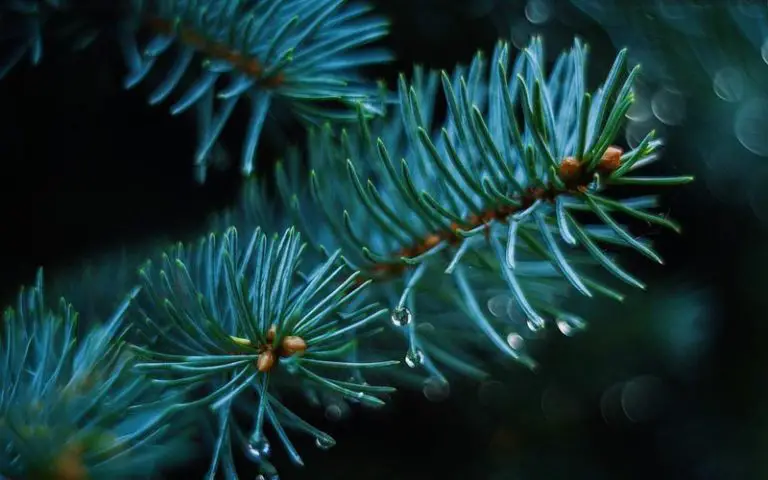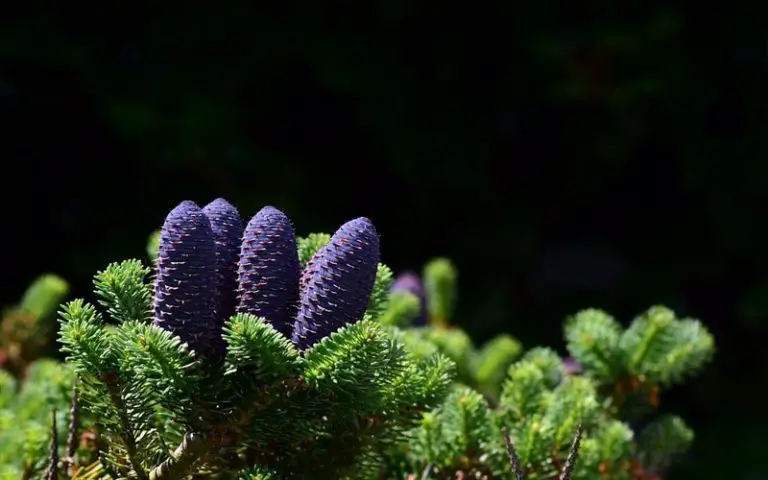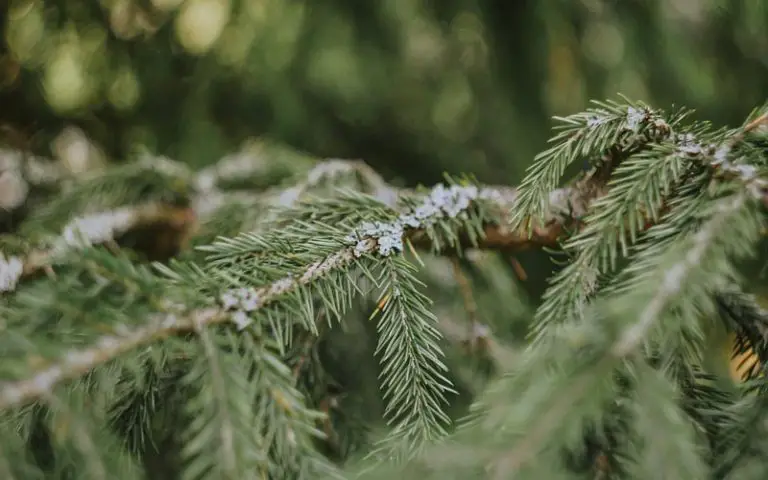How to Propagate a Spruce Tree Bonsai

To propagate means to breed a specimen of plant (or animal) by natural processes from the parent stock. In nature, spruce trees reproduce when mature seeds fall to the ground and germinate, but gardeners can grow spruce trees (including bonsais) either from seed or by rooting cuttings.
The spruce, widespread in the Northern hemisphere, is an evergreen conifer, and it’s familiar even to non-gardeners because it is the most widely used for Christmas trees. The spruce takes a characteristic conical shape, the leaves are like needles, and the branches sprout from the trunk in a whorl pattern. Left to their own devices, spruces grow up to 200ft tall, but spruce bonsais are typically only 7-9 inches high and about 3-5 inches wide.
Care for it well, and your spruce bonsai will be with you for 40-60 years. Even the needles can stay on the branch for as much as ten years!
Propagate a Spruce Tree Bonsai From Seed
Growing any type of tree from seed can be rather challenging. Once you’ve planted your spruce tree seeds, they may take many months (or even many seasons) to germinate; and many species only germinate under a very specific set of conditions.
When you start from seed, you’ll need to possess your soul in patience for several seasons while the seedling grows enough to be used. It may take as much as 4-5 years for the seedling to grow a trunk just a single inch in width!
Another thing you’ll need to watch out for is accidental cross-pollination. Many species of trees cross-pollinate easily with other nearby trees, in which case their offspring can be expected to differ in several respects from the parent. If this happens, you really won’t know what to expect by the time you’re ready to start bonsai training.
On the plus side, if you manage to grow a bonsai successfully from seed, the sense of accomplishment you are likely to feel will probably make all the trouble worthwhile.
Choosing your seeds
Spruces are not among the species known for being easy to grow from seed. However, this is by no means impossible to the true expert!
You can get special ‘bonsai seed’ from retail outlets, but the term is a misnomer because there is no particular type of seed that is better for growing bonsais than any other type. More often than not, using the term ‘bonsai seed’ simply allows retailers to inflate their prices unrealistically.
To increase the chances of your seed’s germinating, choose seeds that ripened during the most recent growing season (because quite a few types of trees have seeds that do not stay viable for very long). You’ll also have a better chance with seeds that grow naturally in your area because that means that the conditions around you are close to ideal for that type of seed to germinate successfully.
Collect cones before they are ripe (mid-fall); let them dry until the seeds spill out naturally. At this point, you might want to use a seed-treatment method like SCARIFICATION.
Scarification
‘Scarification’ refers to the process in which you make a small cut in the seed coat before planting the seed. Nicked seeds are then soaked in water, which can facilitate the germination of the embryo. The technique can be especially beneficial when used on seeds with a hard, impermeable seed coat.
Strictly speaking, it should not be necessary to help the embryo in this way since it’s capable of breaking through the seed coat naturally – but scarification can lower the risk of a seed simply failing to germinate. That is particularly nifty when dealing with seeds that have a low germination rate or seeds that are very rare. It stands to reason that if you were able to obtain seeds only with great difficulty, you would be very reluctant to waste any.
To ‘scarify’ your seed, make a small nick in the seed’s outer coating, using something like a nail clipper; otherwise, you can use sandpaper to break through the seed coat. Either way, be careful to make your cut only just deep enough to break through the seed coat and not deep enough to damage the plant embryo inside.
If your seed has a hilum (which is a scar from where the seed broke off the ovary inside the fruit), nick the seed at the point directly opposite the hilum to minimize the risk of damaging anything.
After soaking your nicked seeds overnight (or for at least several hours), plant them out immediately. Storing seeds after you have already nicked them can drastically decrease the likelihood of their germinating.
Most species drop their seeds in autumn; the seeds then lie dormant through winter; and germinate in spring, with the rising temperatures. Dormancy is important because if the seeds tried to germinate straight away, the seedlings would be killed off by the cold temperatures (in all but the very warmest climates). If the seed germinates in spring, in contrast, a young seedling has more than half the year in which to grow before it is faced with cold weather.
Stratification
Stratification is a technique used to encourage the germination of seeds that are being germinated out of season, seeds that have been stored over winter, or seeds that are unlikely to germinate naturally in the climate where you’re trying to grow them. To stratify your seeds, first soak them in water for about 5-6 hours, then store them at room temperature, in a damp plastic bag, for 3-4 days.
Then put the seeds in a container of water, and check which ones sink and which ones float. Proper seeds would be heavy enough to sink, so any seeds that float must be just an empty shell, with no viable contents. Be careful when using very small seeds: they may float even when they are still viable.
After weeding out any floaters, put the plastic bag of seed right at the bottom of the refrigerator, where the temperature is the warmest. Over the next two weeks, move the bag slowly up the shelves to the very top; over a second two-week period, move the seeds slowly back down to the bottom shelf. Remove the seeds from the refrigerator, and plant out immediately.
Planting your seeds
You can buy a special potting mix – ‘bonsai soil mix’ – at garden stores, and almost every bonsai tree will grow better in this kind of mix than in anything else. The word ‘soil’ is actually a misnomer here, as this type of ‘soil’ is a mixture of akadama (a mineral similar to clay), pumice, and black lava. Some of the commercially available products include various horticultural additives, so be sure to check the label if you’re one of those ‘strictly organic’ gardeners!
If you plant your seeds into a seed tray, you will be able to control the placement – therefore the temperature and light – much more minutely than if you plant straight into the ground. This is a particularly good idea if you are using artificially-stratified seed, or are planting outside in autumn. Use one of the seed compost mixtures available from garden centers, or mix your own: ideally, about half multi-purpose compost, half sand.
We recommend filling your container with about 2/3 full of compost, pressing it down lightly, and distributing the seed evenly on top. Then cover the seeds with a layer of compost 2-3 times their own width. Lastly, spread a thin layer of gritty or sharp sand on top, to keep the seed in place.
You can place the tray outside, if conditions are just right, or you can place the trays on a windowsill or in a greenhouse. Temperatures of about 50-60°F work for most seeds, although seeds from subtropical or tropical climates may require significantly higher temperatures.
Keep the compost damp at all times as the seeds sprout and grow, but never allow it to become waterlogged. This is very important: you may even need to re-pot your seedling to improve the drainage if necessary, since waterlogged seeds can easily die.
As the seedlings become young saplings, you can continue to use (larger and larger) pots for them, until they are ready to be planted directly into the ground or to be used for bonsai.

Propagate a Spruce Tree Bonsai From Cuttings
Growing new plants from cuttings is quite a reliable way of propagating since it doesn’t rely on risky fertilization and germination processes that can easily go wrong, in a variety of ways.
It’s also significantly quicker than growing from seeds. You don’t have to wait for the seed to germinate in its own good time but can take advantage of a mature plant that’s already growing strongly.
To propagate trees for bonsai use, you normally need a stem cutting: softwood cuttings, semi-ripe cuttings, or hardwood cuttings. Different species vary as to when is the ideal time to take cuttings – but if you’re already trimming suitable cuttings from your established plants, you might as well at least try to root them.
There is nothing to be lost (apart from possibly a very small amount of time and expense) and potentially much to be gained, if one of the cuttings takes root.
Preferably in late summer to early fall, choose healthy shoots, about as long as your palm, from the tree you want to reproduce. Cut each shoot again at the base, at an angle, and remove the needles from the lower portion of each cutting (about the lowest 2/3).
Dipping the cut ends into rooting hormone can boost rooting, although you can also root your cuttings without any hormone.
Plant each cutting deeply into the soil (preferably sandy and loamy) [gardeningknowhow.com], then nurture it carefully until it has its own roots, and is large enough to be re-potted. Whether you start from seed or cutting, your young tree needs to have quite a thick trunk before you plant it into a bonsai pot and start with bonsai training.

Final Thoughts
Spruce bonsais are quite hard to style because branches usually stubbornly return to their original positions, no matter how you try to train them, or even wire them in place. However, skillful bonsai artists can still achieve spectacular results with spruces.







